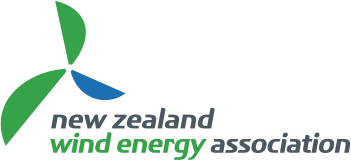The quality of the wind resource and level of annual electricity generation is a key determinant of the economic viability of wind farms and therefore where they are located.
New Zealand is generally recognised as having has one of the best wind resources of any country in the world thanks to its location, with the country lying across the prevailing westerly winds in an area long referred to by sailors as the 'Roaring Forties'.
New Zealand is exposed to winds travelling across the ocean uninterrupted by other land forms. A fairly steady succession of troughs and depressions passes to the east of the country, creating the predominantly westerly wind flow.
As each of these weather systems passes the country it creates a pressure difference, and therefore wind flow pattern over the mountains. In some locations this wind flow is just about continuous and can be of relatively high speed, making these areas well suited to wind energy development.
Wind farm developers spend considerable effort measuring wind flow and understanding local wind conditions when investigating wind farm sites. They use sophisticated computer models to identify good sites and then take actual wind speed measurements to finalise the selection of a wind farm site and turbine locations.
In New Zealand, most areas with a high average wind speed (Class I sites) tend to be in coastal areas or on exposed hill tops and ridgelines. However, with advances in wind turbine technology, sites with lower average wind speeds (Class II and III) are becoming economically viable.
Generating potential of NZ’s wind
Regular reviews of New Zealand’s wind potential are undertaken. The most recent was published by MBIE in March 2020 titled ‘Wind Generation Stack Update’ the Report’s authors, Roaring40s Wind Power, was tasked with determining if the future wind generation stack contained at least 8,000 MW of potential new generation between now and 2060.
The Report confirmed what we know that NZ has a vast economic wind resource available to support a low-emissions economy. The study identified 82 onshore projects, totalling 11,400 MW with a combined annual generation of between 39,000 to 44,000 GWh/annum.
The study also briefly looked at offshore wind and identified 8,000 MW of capacity although noting that development was unlikely to occur before 2050 ‘due to the number of more attractive onshore sites that exist in NZ’.
New Zealand’s actual wind energy potential is expected to be considerably higher than that identified in the Wind Generation Stack Update as the study focused on projects greater than 100 MW. A 2006 Report by the Parliamentary Commissioner for the Environment title ‘Wind Power, people and Place’ confirmed that large scale wind farms can only ever occupy a small portion of a country’s wind locations. Small microclimates which have funnelling or hilltop attributes are very favourable for community wind projects.
What about when the wind is not blowing?
Wind generation does vary with the natural fluctuations in wind speeds. New Zealand has storage-based hydro generation that provide a flexible complement to variable wind generation.
Essentially, if we use wind generation when it is available, we can reduce hydro generation and keep some of the water stored in the hydro lakes. This water effectively becomes a battery of energy that can be drawn on to meet peaks in demand or to cover for wind on calm days.
On a seasonable basis wind generation is a remarkably consistent and as more wind farms are built, in different geographical locations, wind’s short-term variability reduces.
Regional renewable energy assessments
The Energy and Efficiency Conservation Authority has worked with regional councils to identify what renewable energy resources they have in their area, and then how to integrate this information into their planning and strategy processes.
Regional reports for the following regions can be downloaded from the EECA website:
- Bay of Plenty
- Auckland
- Waikato
- Canterbury
- Taranaki
- Tasman
- Northland
- Marlborough
- Manawatu-Wanganui
- Wellington
- Otago
- West Coast
